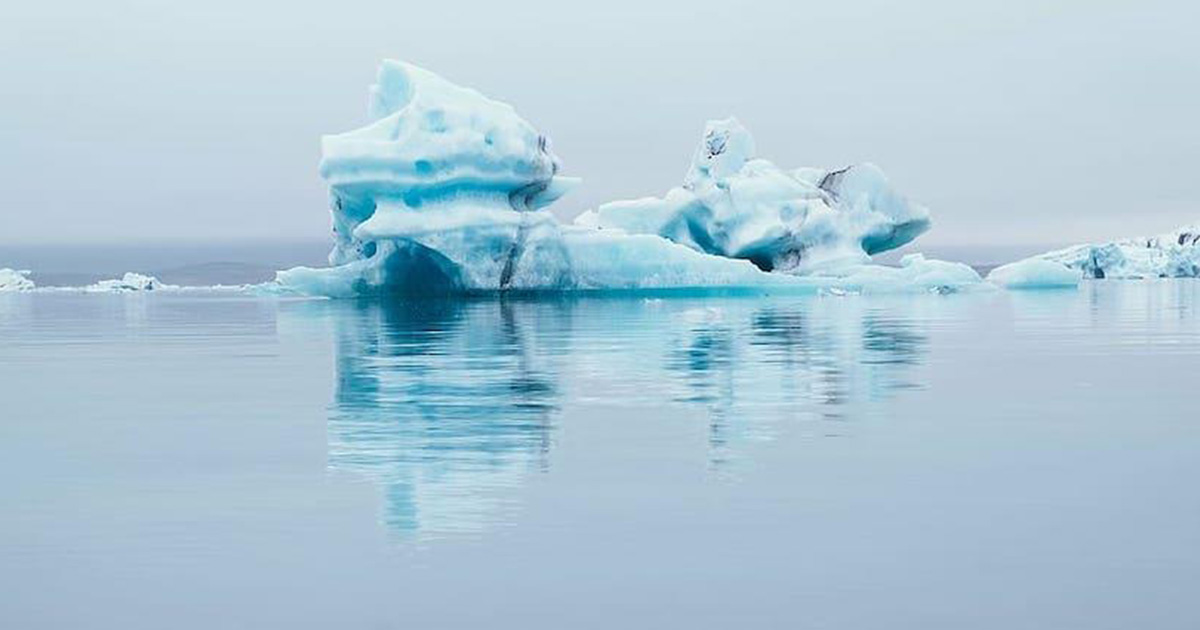When scientists discovered a hole over Antarctica in 1985, countries across the globe got together and wrote a treaty designed to protect the ozone layer, which shields the Earth—and us—from harmful levels of ultraviolet radiation.
The resulting Montreal Protocol, the only United Nations treaty ratified by every country in the world, was signed in 1987 and entered into effect in 1989, when little was known about its impact on the global climate. Its purpose was to reduce atmospheric concentrations of ozone-depleting substances (ODSs), materials commonly used in products such as refrigerators, air conditioners, fire extinguishers, and aerosols. For more than 50 years, it has been an important mitigation treaty, affecting many aspects of the global climate.
New Study Shows That the Treaty's Impact Goes as Far as the Arctic
A new study led by climate researchers at Columbia Engineering and the University of Exeter demonstrates that the treaty's impact reaches all the way into the Arctic: its implementation is delaying the occurrence of the first ice-free Arctic by as much as 15 years, depending on the details of future emissions. The study was published by PNAS.
"The first ice-free Arctic summer-with the Arctic Ocean practically free of sea ice-will be a major milestone in the process of climate change, and our findings were a surprise to us," said the study's co-author Lorenzo Polvani, Maurice Ewing and J. Lamar Worzel Professor of Geophysics in the Department of Applied Physics and Applied Mathematics and professor of earth and environmental sciences. "Our results show that the climate benefits from the Montreal Protocol are not in some faraway future: the Protocol is delaying the melting of Arctic sea ice at this very moment. That's what a successful climate treaty does: it yields measurable results within a few decades of its implementation."
Impact of ODSs
Polvani noted that the rapid melting of Arctic sea ice is the largest and clearest signal of anthropogenic climate change. Current projections indicate that the first ice-free Arctic summer will likely occur by 2050, owing largely to increasing carbon dioxide concentrations in the atmosphere. However, other powerful greenhouse gases have also contributed to Arctic sea ice loss, notably ODSs. When ODSs became strictly regulated by the Montreal Protocol In the late 1980s, their atmospheric concentrations began to decline in the mid-1990s.
Polvani and his co-author Mark England, Royal Commission for the Exhibition of 1851 Senior Research Fellow at the University of Exeter and a former Ph.D. student with Polvani, were particularly interested in exploring the impact of ODSs because their molecules, while a lot less common in the atmosphere, are tens of thousands of times more powerful at warming the planet than carbon dioxide.
Analysis of New Climate Model Simulations
The researchers analyzed new climate model simulations and found that the Montreal Protocol is delaying the first appearance of an ice-free Arctic summer by up to 15 years, depending on future CO2 emissions. They compared the estimated warming from ODS with and without the Montreal Protocol under two scenarios of future CO2 emissions from 1985-2050. Their results show that if the Montreal Protocol had not been enacted, the estimated global mean surface temperature would be around 0.5 °C warmer and the Arctic polar cap would be almost 1 °C warmer in 2050.
"This important climate mitigation stems entirely from the reduced greenhouse gas warming from the regulated ODSs, with the avoided stratospheric ozone losses playing no role," said England. "While ODSs aren't as abundant as other greenhouse gasses such as carbon dioxide, they can have a real impact on global warming. ODSs have particularly powerful effects in the Arctic, and they were an important driver of Arctic climate change in the second half of the 20th Century. While stopping these effects was not the primary goal of the Montreal Protocol, it has been a fantastic by-product."
Continued Monitoring is Critical
Since the mid-1990s, the Montreal Protocol has successfully reduced atmospheric concentrations of ODSs and there are signs that the ozone layer has started to heal. But recent research has suggested a slight rise in ODS concentrations from 2010–20, and England and Polvani stress the importance of staying vigilant.
Journal Reference:
- Mark R. England, Lorenzo M. Polvani. The Montreal Protocol is delaying the occurrence of the first ice-free Arctic summer. Proceedings of the National Academy of Sciences, 2023; 120 (22) DOI: 10.1073/pnas.2211432120





